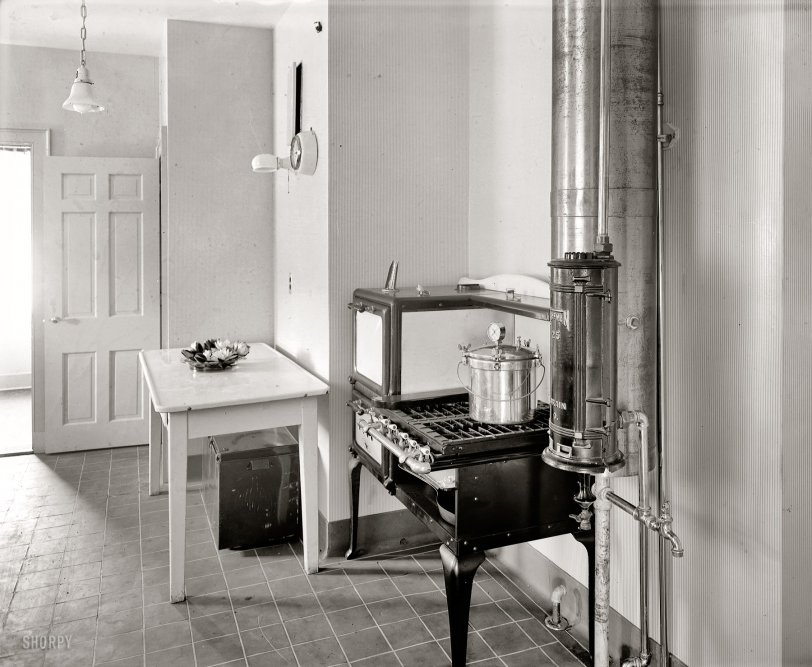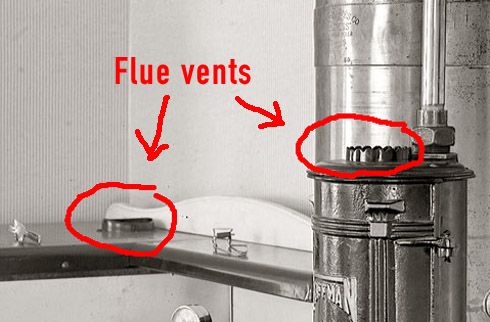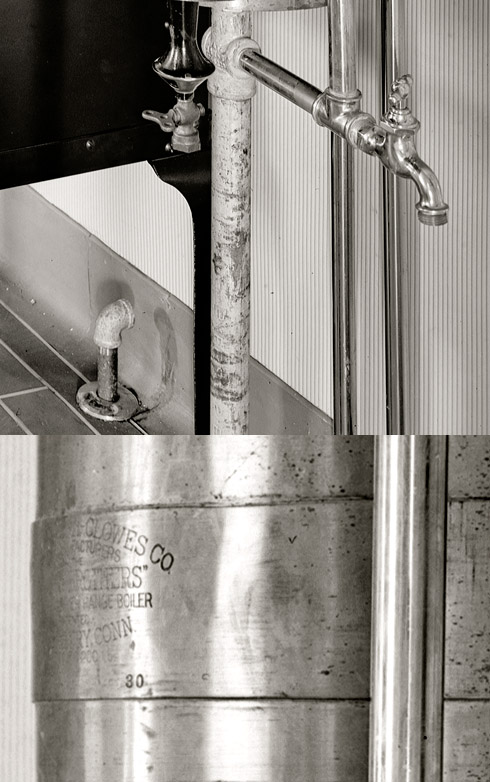


Framed or unframed, desk size to sofa size, printed by us in Arizona and Alabama since 2007. Explore now.
Shorpy is funded by you. Patreon contributors get an ad-free experience.
Learn more.

- Lofty addition
- In 1912
- Keenan Building
- Six years old
- Taken from the P.J. McArdle Roadway?
- It stood only 47 years
- Three track mind
- Incline to the right
- Reach for the sky, 1912 style
- No clean sweep
- Same Job Title, Same Face
- Sadly Lost
- Beautiful ...
- Where you get your kicks
- Aim High
- Pueblo Revival sisters
- Pueblo Neoclassicism
- Milk Man
- Regional dialect.
- Spielberg's inspiration
- Great Photo
- Loaf Story
- Do you still have the Rakes category?
- Could almost be a scene from the 1957 movie 'Hell Drivers'
- The Wages of Fear.
- Conspicuous by their absence
- Got Milk?
- All that aluminum
- No lefties
- Smoke 'em if you've got 'em
Print Emporium
All the Conveniences: 1920

Another view of the circa 1920 kitchen from the previous post. The complicated-looking range-and-boiler combination seems to have been popular at the time. National Photo Company Collection glass negative. View full size.
RE: Pressure Canner
My mother inherited a pressure canner from my grandmother. It's from the 1920s and I think it's aluminum. It doesn't have the wingnut cover locks, but uses a rubber gasket, and the cover rotates clockwise to lock it in place. It has the gauge on the top of it, and had wooden handles. My sister Rita now has it, and God only knows how many pints and quarts of vegetables have been through that canner over the years, but I think I still have a couple quarts of green beans from the 1980's. I wonder if they're still ok to eat?
Pressure canner
What first caught my eye here was the pressure cooker! I didn't realize they had home pressure cookers that early, but I searched and found out that they had actually been around for a while by then. I'll bet they were expensive then and not many people had them. I have a Ball Blue Book from the early 1930s that still gives processing times for canning meats and vegetables in just a water-bath canner. The very long cooking times weren't always enough to prevent deaths from botulism. By the time my edition of the Searchlight Recipe Book came out, in 1944, directions were given for processing low-acid foods in a pressure canner, only.
Is that really a range and boiler?
It looks mightily like a range (stovetop) and oven to me. I do have a similar-vintage stove and it is a stovetop over an oven, and the oven is super-teeny like those. I did some searching online and found a couple of comps, but nothing identical. (The one site is really a mess...)
http://www.antiquestoveheaven.com/battle.html
http://www.antiqueappliances.com/products/chambers/1922_chambers.htm
In my looking, quite a few had BROilers, but not BOilers.
[The BOILER is the six-foot-tall tank on the right. A very common setup for the times. Another here. - Dave]
Sweet Lorain
Twenty years ago I lived a block east of the Hoffman Heater factory on Oberlin Avenue in Lorain. Now I live 10 blocks south. The factory is still there, producing automotive bearings, I believe.
I love this website and have been a fan for about a year -- enjoying all the historical photos, interesting comments and now, tidbits about my hometown.
Hoffman Heater Co.
The water heater appears to be manufactured by the Hoffman Heater Company, located at 1391 Oberlin Ave, Lorain, Ohio. They seem to only have been manufactured for only a few years in the early 1920s. The Washington D.C. distributor was located at 1217 Eye St, N.W. I haven't found any images of this particular model but there is a 1920 ad in the The Gas Record illustrating a different type.
Is the valve on the bottom for the future connection of the gas line?
[Yes, I think so. The tank, which would have been copper or brass, is a "range boiler" made by Randolph-Clowes brassworks in Waterbury, Connecticut. The company was bought out by American Brass, a subsidiary of Anaconda Copper, in 1929. The little pipe coming out of the floor and pointing at the wall would be the steam outlet for the pressure-relief valve. - Dave]
UPDATE: Oh, I hadn't even noticed the stamped text on the main body of the water heater. It is a "Brown and Brothers" seamless drawn copper range boiler. "The only boiler which has no longitudinal seam." "Thoroughly and heavily tinned on the inside." [Architectural Record, Architect's and Builder's Pocket-Book]
No Vents!
I noticed in both pictures there doesn't appear to be any venting for either the water heater or the stove/range. How far we've come in recognizing the inherent dangers of combustion gasses and smoke since then.
That said, it's a very nice, spacious kitchen layout, only maybe needing a bit of small extra counter top space and maybe a standalone butcher block table to complete the area.
[This is an unfinished kitchen. There's no gas connection yet to the heat exchanger for the boiler, which like the stove has a flue vent but no fluepipe. Also no icebox. - Dave]

Outlets Aplenty!
I am quite jealous, this kitchen has TWO electric outlets, with possibly another provided on the wall supported light fixture. My 1925 kitchen (barely updated) has only one.
On Hot Water
I had that very same water heater arrangement in the kitchen of a duplex I rented in Cambridge in 1965. My stove was different, and it had a space heater with coils for heating water. The "boiler" had a door that you opened to light the gas burner, which looked like an inverted shower head. If you weren't using the space heater when you needed hot water, you had to fire up the water heater, and then turn it off when the water was hot. Failure to do so would result in boiling the water in the pipes and seeing steam escape from the pipe joints. Don't ask me how I know that!

























On Shorpy:
Today’s Top 5